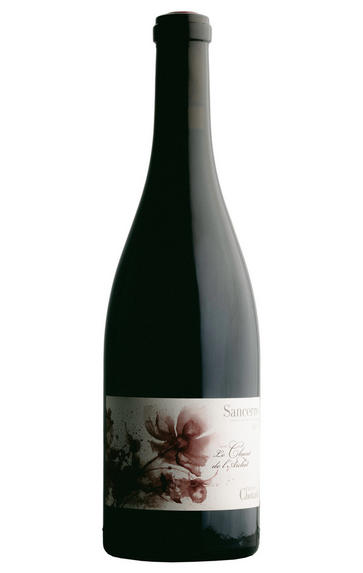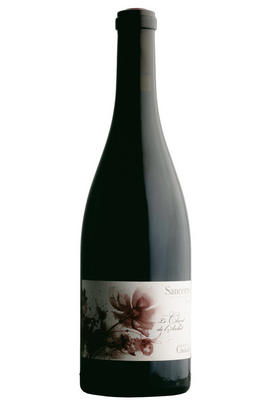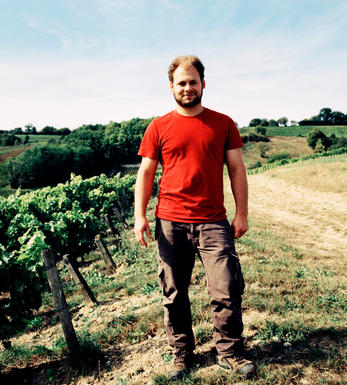
2019 Sancerre Rouge, Le Chant de l'Archer, Daniel Chotard, Loire

Critics reviews
The 2019 Le Chant de L'Archet is pure and elegant. It has fine damson and cherry fruit and a delicate, mouthwatering acidity. The limestone is grown on the same soils as Chablis-Kimmeridgian marls and provides finesse and precision. The finish is drawn-out, fine-grained and lightly chalky. Long and fragrant.
Technical details: 80% destemmed, four weeks cuvaison and 24 months in older, larger format oak. No fining nor filtration, keeping all the good stuff in.
Drink 2022 - 2032
Rebecca Gibb MW, Vinous.com (December 2022)
About this WINE

Simon & Daniel Chotard
There have been vignerons in the Chotard family since 1789, but it was in 1992 that Daniel Chotard resumed work at the domaine. With a passion for music, Daniel built the domaine’s reputation around conviviality, often hosting music and wine soirées at the estate. In recent years, his son, Simon, has taken over, pushing the domaine to greater heights with significant improvements in vineyards and wineries.
The domaine’s vines are situated on limestone slopes in the southwest region at Reigny near Crezancy-en-Sancerre, in the Loire. The area under vines is 15 hectares, 80% of which is planted with Sauvignon Blanc, with the remaining 20% being Pinot Noir. They farm 40 different vineyard parcels in total.
Simon strongly focuses on sustainability; the vineyards are certified organic from the 2022 vintage. He also believes in minimal intervention in the winemaking process, with no chaptalisation, no acidification and only indigenous yeasts. All of the fruit has been harvested by hand since 2018.
Where Daniel produced just a handful of wines, Simon has taken a more Burgundian approach, identifying and separating his best plots to make them individually, adapting the winemaking to each site. In the winery, where once everything was made in stainless steel tank, Simon now has an array of vessels; foudres and large barrels (both oak and acacia) and amphorae are all employed to bring out the best in each wine.

Sancerre
Sancerre is a famous white Sauvignon Blanc appellation located on the left bank of the Loire, across from Pouilly-Fumé.
While Pouilly-Fumé's vineyards are tightly clustered and homogeneous, Sancerre's 14 communes (including the great villages of Chavignol, Bué, Verdigny, Amigny and Ménétréol) are widely dispersed, covering nearly 3,000 hectares over vertiginous valleys at up to 350 metres above sea level, and three distinct soil types: silex, a white flint found around Sancerre and Ménétréol in particular, giving perfume and a fine structure; terres blanches, a calcareous clay soil that whitens as it dries (widely distributed), delivering a full, fruity richness; and caillottes, a Portlandian soil brimming with large limestones imparting both power and verve – as found in Sancerre, Chavignol and Bué.
A fourth soil type, griottes, tightly-packed with small limestones, has also been identified – as found near the village of Vosges. Kimmeridgean clay crops up less consistently than in Pouilly-Fumé and since most Sancerre, bar the single-vineyard wines, are a blend of soils the result is a richer, fuller and fleshier Sauvignon Blanc.
As with Pouilly-Fumé, an increasing number of (single-vineyard) wines are being raised in French oak, mostly 500-litre and demi-muids; little surprise in light of naturally higher alcohol levels due to global warming. Sancerre Rouge is also made from Pinot Noir, the quality of which is often compromised by bleeding some of the juice to make rosé – Vincent Pinard is a master nonetheless.
Recommended producers: François Cotat, André Dezat, David Sautereau
Top vineyards include: Les Monts Damnés, La Grande Côte, Le Cul de Beaujeu, Grand (and Petit) Chemarin, Chêne Marchand

Pinot Noir
Pinot Noir is probably the most frustrating, and at times infuriating, wine grape in the world. However when it is successful, it can produce some of the most sublime wines known to man. This thin-skinned grape which grows in small, tight bunches performs well on well-drained, deepish limestone based subsoils as are found on Burgundy's Côte d'Or.
Pinot Noir is more susceptible than other varieties to over cropping - concentration and varietal character disappear rapidly if yields are excessive and yields as little as 25hl/ha are the norm for some climats of the Côte d`Or.
Because of the thinness of the skins, Pinot Noir wines are lighter in colour, body and tannins. However the best wines have grip, complexity and an intensity of fruit seldom found in wine from other grapes. Young Pinot Noir can smell almost sweet, redolent with freshly crushed raspberries, cherries and redcurrants. When mature, the best wines develop a sensuous, silky mouth feel with the fruit flavours deepening and gamey "sous-bois" nuances emerging.
The best examples are still found in Burgundy, although Pinot Noir`s key role in Champagne should not be forgotten. It is grown throughout the world with notable success in the Carneros and Russian River Valley districts of California, and the Martinborough and Central Otago regions of New Zealand.


Buying options
Add to wishlist
Description
The Chant de l’Archet Sancerre Rouge is a rival for many wines in Burgundy. Red fruits jumped from the glass with a melting soft creaminess whilst tasting and uplifting with a beautiful lightness of touch and a hint of acidity, offering a well-balanced structure that will delight for years to come.
It is drawn from two vineyards in Reigny, a village with a reputation for quality Pinot Noir. One vineyard, located high on the slope, provides finesse while the other produces fruit of concentration. Packed with creamy red berry fruit and subtle floral notes, it has beautifully ripe tannins with a cotton-like texture alongside the saline, juicy finish.
Drink now - 2028
Adam Bruntlett, Senior Buyer, Berry Bros. & Rudd (June 2022)
wine at a glance
Delivery and quality guarantee